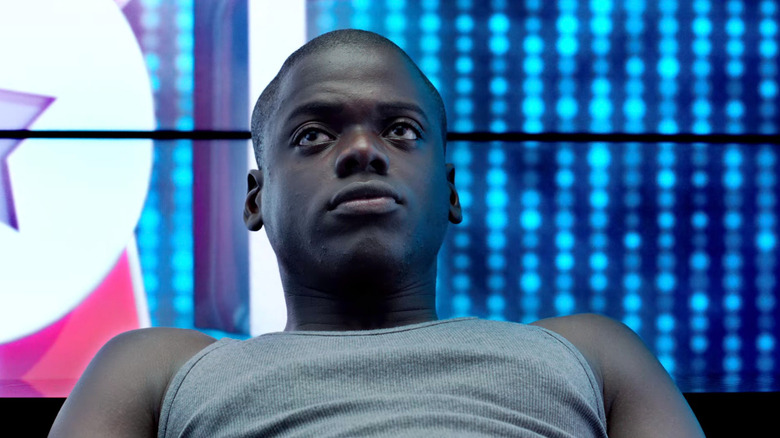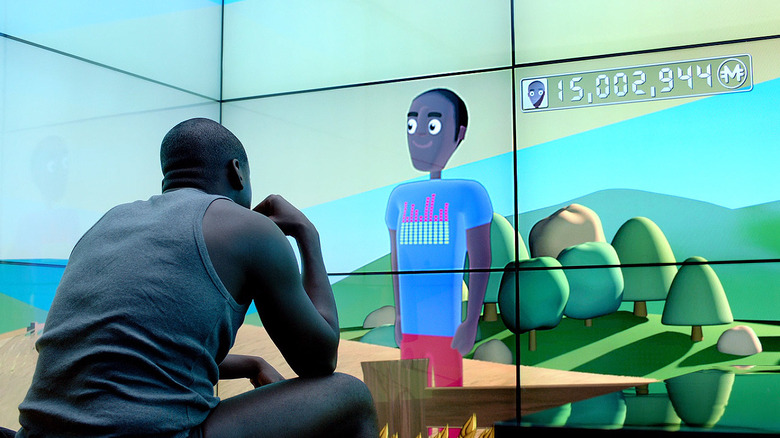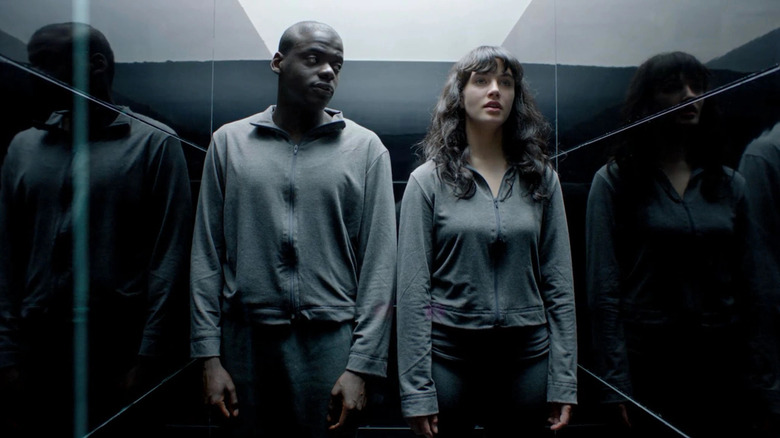The Worst Xbox Accessory Ever Played A Big Role In A Black Mirror Episode
The science fiction anthology series "Black Mirror" is interesting because it uses its technological allegories to try and tell us something about our present and maybe predict a bit of the future, but it's also inspired by current and past technology, too. In the season 2 episode "Fifteen Million Merits," co-written by series creator Charlie Booker and his wife, Kanak Huq, we see a world absolutely filled to the brim with screens and microtransactions. Bing (Daniel Kaluuya) lives in a room surrounded by digital displays that dictate every part of his life from the time he wakes up until he goes to bed. He spends his time mostly playing video games or riding on his stationary bike to earn "merits," a kind of digital currency needed for basic necessities, and it's not hard to imagine this bleak future as a very real possibility.
What's kind of funny about it, however, is that Booker and Huq were pretty inspired by a now-obsolete piece of gaming technology that's pretty widely regarded as the worst Xbox accessory ever. That's right — quite a bit of the episode was inspired by the absolutely abysmal Xbox Kinect.
The Xbox Kinect was a hot mess but it inspired a pretty good Black Mirror episode
In the book "Inside 'Black Mirror'," Booker explained the general ideas behind the system in "Fifteen Million Merits" and the gaming console accessory that somehow made a huge impact on their vision, saying:
"I was playing a lot of Xbox 360 games, and they'd just updated their system so you saw these little cartoon avatars of yourself. The Nintendo Wii had also come along with little cartoon avatars of everyone, and you could spend a lot of money, buying these things that didn't exist. I'd been reading about people being beaten to death over objects they'd bought in online games that weren't real. [...] the idea was an Apple store version of Hell. With these screens on the walls, a room was a prison cell but looked sort of chirpy. The Xbox Kinect had just come out with hand gestures and movements like that, so we put a lot of that into it as well."
In order to interact with the system that controls his life, Bing both speaks to the monitors/his room and uses gestures, especially hand movements, to move through options. It's an idea that's been prevalent in sci-fi movies for a long time, with many longing for the user interfaces from something like the super-slick "Minority Report," but unfortunately, the science fiction premise of the Kinect did not match with its reality.
The Kinect was bad, but not quite Black Mirror levels of bad
The Xbox 360 Kinect was supposed to be the future of gaming, with a camera system that followed users' movements and then reacted to them in real time ... theoretically. In actuality, it was often laggy and sometimes didn't pick up your movements at all, which could be pretty frustrating when it ended in a loss on games like "Dance Central." Game systems that utilized movement were the new rage, as Nintendo's Wii had special controllers with motion sensors for a few years, and Sony was coming out with their own version, the Move, for the PlayStation 3. Consoles with motion sensor technology have changed quite a bit since then, with at-home virtual reality (VR) becoming even more accessible through headsets like the Oculus Rift, but in 2010, it was still really glitchy.
Here's the thing, though: as terrible as the Kinect was (and it really was terrible; I had one and swore at it frequently), it's still not as bad as being in an episode of "Black Mirror." The Kinect was an annoying piece of technology, but the tech in "Black Mirror" is often out for blood, so maybe we should count our blessings.


